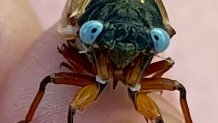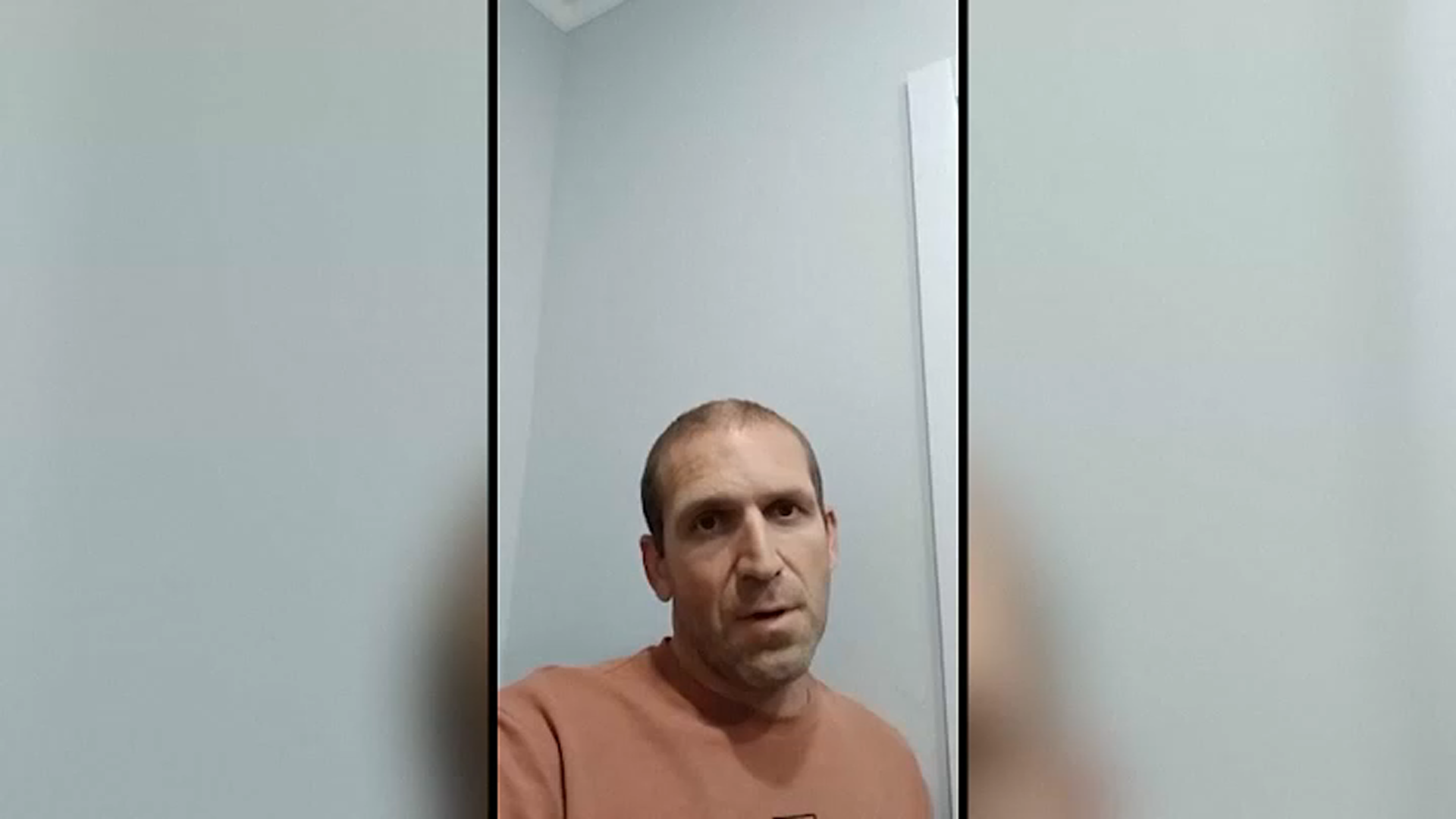A rare cicada was reportedly spotted in a Chicago suburb over the weekend and it's a sighting experts called "one in a million."
As the cicada emergence begins in force across the Chicago area, many have captured images of the long-awaited insect with its signature red eyes. But in one image, a unique change appeared.
Kelly Simkins, owner of Merlin's Rockin Pet Show, said she spotted a blue-eyed cicada in the Orland Grassland forest preserve in Cook County. Simkins said the image was captured at 7 a.m. Monday.

Experts said blue-eyed cicadas have been seen before, but such sightings are rare.
"One in a million," said Dr. Gene Kritsky, dean of Behavioral and Natural Sciences at Mount St. Joseph University in Cincinnati.
Kritsky, who designed an app that tracks cicadas in the U.S. called Cicada Safari, said the image from Orland Park is one of only two he has seen so far this year out of 40,000 reports. In previous emergences, he said he's seen two or three such cicada images come through out of 500,000 submissions.
Local
The cause of the pigment change or mutation remains unclear, Kritsky said.
The unique cicada has been the source of social media rumors for years, with reports surfacing that they could be worth money. Kristky, who was at the center of the "urban legend" in previous years, said that is not true, however.
Feeling out of the loop? We'll catch you up on the Chicago news you need to know. Sign up for the weekly Chicago Catch-Up newsletter.
Cicada sightings have been climbing in the Chicago area following a hot weekend.
A cicada tracking map that marks spottings across the U.S. shows some of the highest sightings have been reported in suburbs west of Chicago, particularly near the Downers Grove area. The Oak Park area has also seen a higher number of sightings as well as some southern suburbs around the Palos Park and Park Forest areas and northern suburbs like Lake Forest and Highland Park.
A high number of sightings have also been reported in areas of central and southern Illinois, where the emergence began earlier than much of the Chicago area. Still, it appears the Chicago area and northern Illinois have the highest number of reports in the state.
The current emergence is a historic one as it involves two broods of cicadas - Brood XIII and Brood XIX - emerging simultaneously for the first time in more than 220 years.
"This is like the year for Illinois," cicada expert Catherine Dana, an affiliate with the Illinois Natural History Survey, told NBC Chicago. "We are going to have cicadas emerging all over the state."
Warm weekend temperatures likely sparked an increase in the emergence in the Chicago area, as experts said the emergence would begin in force once ground temperatures reached 64 degrees.
The emergence has even started earlier than average in Illinois.
According to some experts, the emergence of the first cicadas came about two weeks ahead of the historic average. It will continue to be sporadic, however, as soil temperature, mulch and turf grass all impact cicadas differently. For example, the soil is warmer near pavement, so cicadas in the those spots are expected to emerge quicker.
A rise in humidity levels can also play a role, the Insect Asylum reported.
That could mean sightings will climb even higher this week as humidity levels are on the rise in the area.
As of Monday morning, NBC 5 Storm Team meteorologists said dew points were set to climb into the low-to-mid 60s, up from the 50s over the weekend. They'll likely stay at that level again Tuesday.
Will it mean another blue-eyed cicada sighting? We'll have to wait and see.



